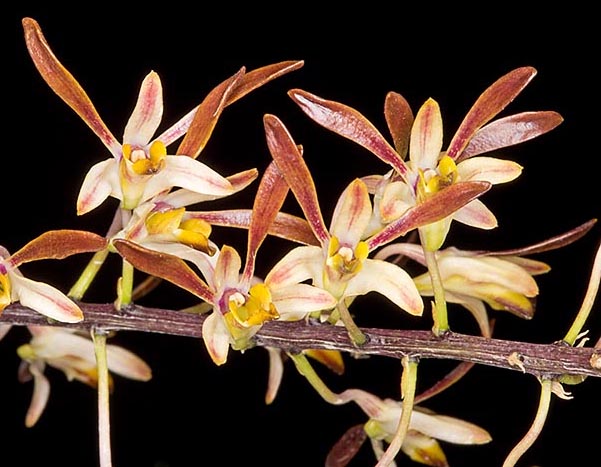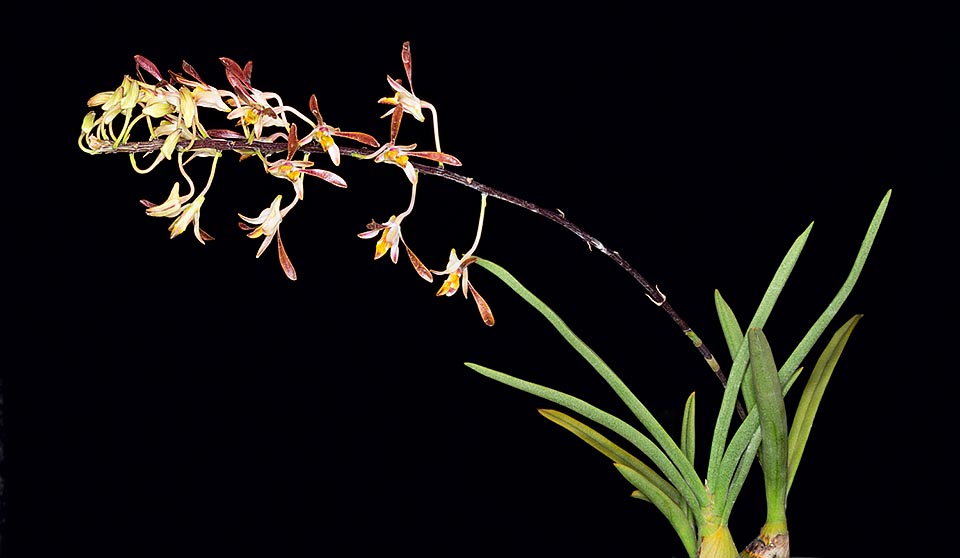Family : Orchidaceae

Text © Pietro Puccio

English translation by Mario Beltramini

Dendrobium carronii is an epiphyte of Queensland and New Guinea © Giuseppe Mazza
The name of the genus is the combination of the Greek substantives “δένδρον” (dendron) = tree and “βίος” (bios) = life, with reference to the numerous species of the genus living on the trees; the species is honoured to the English botanist and explorer William Carron (1821-1876), member of the expedition to Cape York of 1848 and collector for the Botanical Gardens of Sydney.
Common names: Carron’s dendrobium, pink tea tree orchid (English).
The Dendrobium carronii Lavarack & P.J.Cribb (1983) is an epiphytic species with 2-5 cm long pseudobulbs, swollen in the median part, carrying 2-4 fleshy, semi-cylindrical leaves with pointed apex, up to 12 cm long and 0,5 cm broad, of green colour with purple hues.
Racemose inflorescences from the upper nodes, 8-20 cm long, carrying numerous flowers of about 2,5 cm of diameter. Triangular sepals, 0,5 cm long, cream white to pink with spots of brown or purple spots, the lateral sepals, merged at the base of the column, form a sort of spur (mentum) about 0,3 cm long, spatulate petals with pointed apex, practically erect and partially twisted of purple colour, 1,5-2 cm long, and trilobed labellum, 1,5 cm long and 0,8 cm broad, greenish yellow, with erect lateral lobes ad oblong central lobe with pointed apex run by three undulated lamellae.
It reproduces by seed, in vitro, and division, to be done by the vegetative restart, with each section provided of at least 3-4 pseudobulbs.
Miniature orchid with scented flowers and of long duration, about three weeks, similar to Dendrobium canaliculatum and with the same exigencies of cultivation. It requires high luminosity, also some hours of direct sun, high temperatures in summer, 25-35 °C, cooler in winter, with lowest night ones not under the 12 °C, and medium-high humidity, 60-70%; fundamental in all seasons is a good and constant ventilation.

Miniature orchid, grows mainly on trees of the genus Melaleuca. The flowers are perfumed and last 3 weeks © Giuseppe Mazza
The species is reported in the appendix II of the CITES (species whose trade is internationally ruled).
Synonyms: Cepobaculum carronii (Lavarack & P.J.Cribb) M.A.Clem. & D.L.Jones (2002).
→ For general notions about ORCHIDACEAE please click here.
